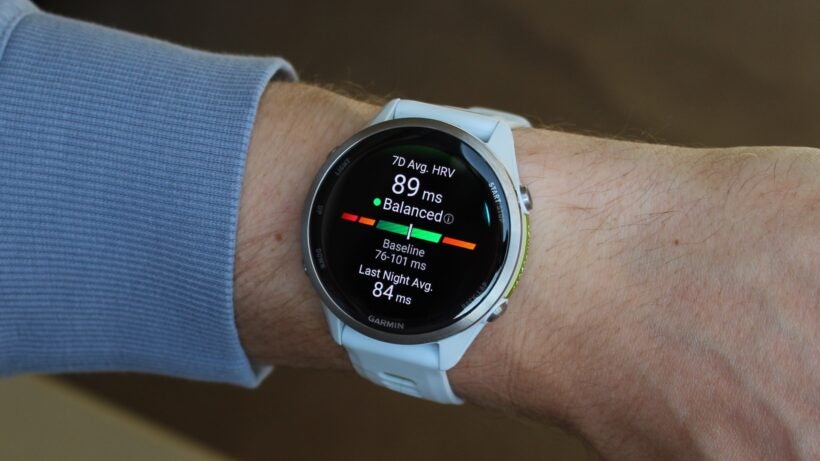We detail everything you need to know about the recovery feature
Heart rate variability has become the cornerstone of recovery-focused metrics on top sports watches, but Garmin’s ‘HRV Status’ takes it a step further.
Once you get to grips with how HRV Status works, it can be one of the best tools to help understand the body’s adaptation to training.
SQUIRREL_PLAYLIST_10207701
However, if you’re new to HRV Status and want to know exactly how it works, or perhaps which Garmin watches the feature is available on, you’re in the right place.
And if you’re just getting started with HRV, get started by reading our quick explainer of exactly what heart rate variability is and what it means.
What is Garmin HRV Status?

Most sports watches and fitness trackers only register an average HRV figure from your previous night’s sleep, leaving you to fill in the gaps and determine whether this is within a typical range or not.
Instead, HRV Status establishes a baseline of your typical HRV range and assesses your recovery into a broader context, then provides an easy-to-understand summary of your own data.
Which watches is HRV Status available on?
- Forerunner 165/255/265/570/955/965/970
- Enduro 2/3
- Instinct 2/3 series
- Epix (Gen 2) & Epix Pro (Gen 2)
- Fenix 7 & Fenix 7 Pro series
- Fenix 8 series
- Tactix 7/8 series
- Venu 3
- Vivoactive 5/6
Explained: How Garmin measures HRV

Garmin measures HRV in the same way as every other wearable device, using light from the device’s heart rate sensor to detect pulse wave blood flow as it’s pushed through your veins.
But what it does with this data is a little different.
Everything is recorded continuously throughout your sleeping hours, with the time between heartbeats measured in milliseconds and then charted using averages of five-minute windows throughout the night.
Your Garmin will take three weeks to establish your heart rate variability range, though you will still be able to view individual nightly averages during this period.
Then, once the baseline is in place, you’ll be able to view nightly scores within the context of your own personal HRV range.
Everybody’s range is individual, with some showing naturally higher variation and other people’s range being much tighter together.
This baseline is also dynamic. Following a period of extended training, for example, this range of variability will likely be much lower than a period of little training or peak condition.
Understanding your HRV Status: How to use it

Once the context has been gathered, HRV Status gets to work, and you’ll be given one of four statuses based on your seven-day rolling average: Balanced, Unbalanced, Low, or Poor.
Balanced
If your HRV Status is Balanced, this means your rolling average is within your personal variation range and indicates your body is functioning optimally and recovering well.
Unbalanced
If the status is Unbalanced, this means that the rolling average is outside of a user’s standard variation, and this can occur if the figure is both lower or higher than the typical range.
High HRV values are typically associated with a strong parasympathetic nervous system, so why is this considered Unbalanced in HRV Status?
According to Garmin and wider research, abnormally high HRV values (compared to a typical baseline) are sometimes linked to overtraining – particularly when this overreaching is achieved through low-intensity activity.
In these instances, the parasympathetic system is essentially working in overdrive in order to try and re-establish a balanced baseline.
Low
If your rolling average significantly drops below your baseline range, you’ll be tagged with the Low status.
In our experience, this typically occurs after a prolonged period of increased training or illness. Though, as we mentioned earlier, an extended period at a lower HRV value will also mean the baseline will shift, too.
Poor
While HRV Status typically uses your own personal range, the Poor tag is reserved for when your baseline shifts below age-based standards associated with good health.
When this occurs, you’ll notice that a baseline is no longer provided. Garmin indicates this is to avoid denoting an unhealthy baseline as Balanced.
Like with the Low marker, we’ve noticed a sudden illness can quickly send our HRV Status into the Poor zone.




